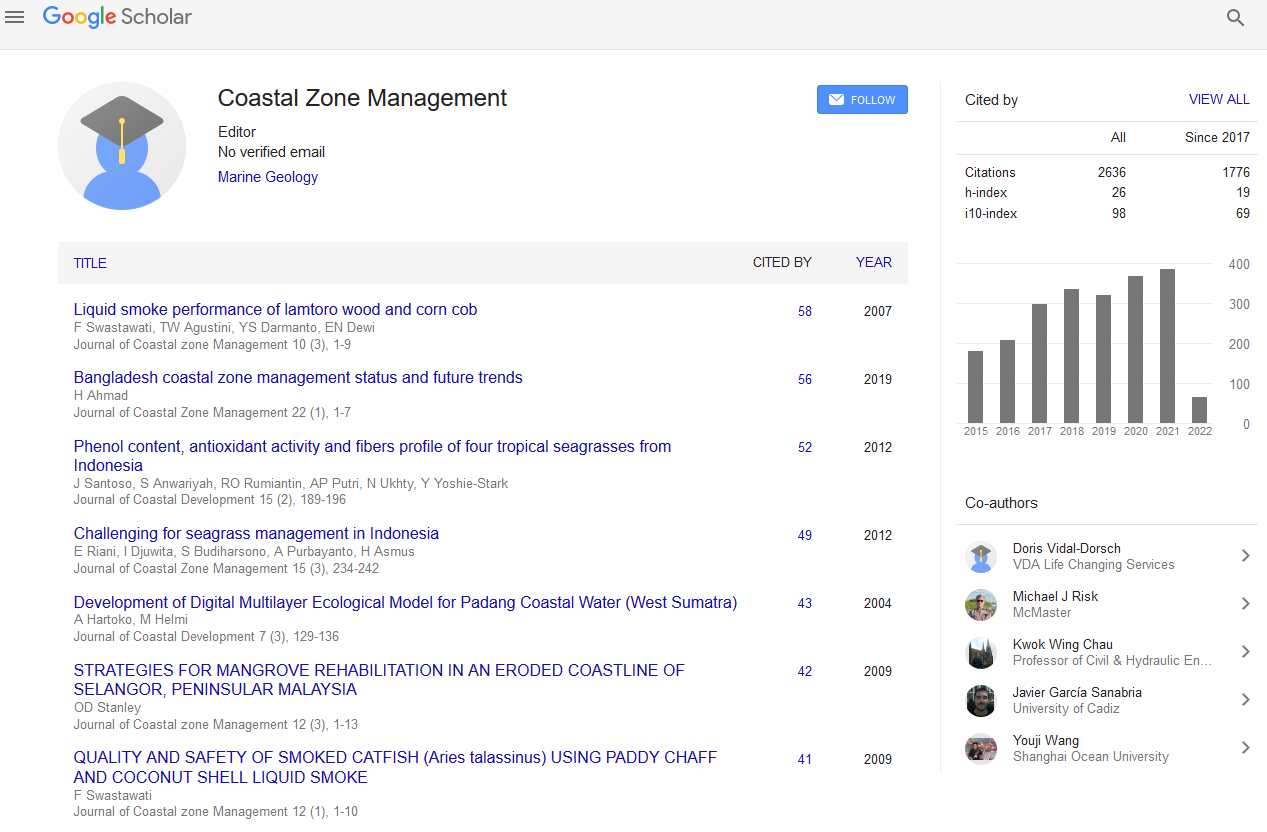Indexed In
- SafetyLit
- RefSeek
- Hamdard University
- EBSCO A-Z
- OCLC- WorldCat
- Publons
Useful Links
Share This Page
Journal Flyer

Open Access Journals
- Agri and Aquaculture
- Biochemistry
- Bioinformatics & Systems Biology
- Business & Management
- Chemistry
- Clinical Sciences
- Engineering
- Food & Nutrition
- General Science
- Genetics & Molecular Biology
- Immunology & Microbiology
- Medical Sciences
- Neuroscience & Psychology
- Nursing & Health Care
- Pharmaceutical Sciences
Abstract
Study of multi-ions plasma in various space regions and wave phenomena around earth
Poornima Varma
The rocket and satellites observations have revealed the enthuastics features in space physics. The research in space plasma has a long history in India since the work of Saha on interstellar plasma in late twenties. The early twenty one centuries saw the emerging of the groups in National laboratories engaged in research in theoretical and experimental aspects. The study of the Earth’s magnetosphere over the past few decades have resulted in a relatively good experimental understanding of both its basic structural properties and its response to changes in the impinging solar wind. Recent satellite observations Akebono have clarified that plasma outflows (Multi-ions) play an important role in abrupt changes in the ion composition in the plasmasheet and ring current during geomagnetic storms. One of the main problems in auroral plasma physics concerns the acceleration of the electrons to kinetic energies much higher than their initial thermal energies. The theory and observations from both the current regions downward (Marklund et al., 2001) and upward (McFadden et al., 1999) have indicated that the electrons are accelerated by parallel electric fields. The precipitating electrons cause the aurora and carry the field-aligned currents in the upward current regions. Low frequency waves (Alfven waves, kinetic Alfven waves, electromagnetic ion-cyclotron waves, Electrostatic ion-cyclotron waves) as well as recently multi-ions plasma study are also investigated. The investigation is based upon particle aspect approach as well as kinetic approach which we have been pursuing since last 30 years (e.g. Varma, et al.., 2007 and references therein; Ruchi Mishra and M.S.Tiwari, 2007 and references therein; Ahirwar, et al.., 2006, 2007 and references therein; Shukla, et al.., 2007 and references 2 therein, Agarwal et al, 2011 and reference therein, Patel et al 2012 and references therein; Tamrakar et al., 2019 and reference therein in various space regions. The study is explaining the broad scenario of space around earth magnetosphere. The utility of the work is justified by many satellite observations. Recently we have studied the effects of He+ and O+ ions on kinetic Alfvén waves with application to PSBL region and found that the multi-ions undergoing mirroring effect influence KAW nature dissimilar to H+ ions. O+ and He+ experience local non-adiabatic acceleration. The mass dependent relative existence of He+/H+ and O+/H+ also affect Landau damping and waveparticle interaction. In plasma confinement, some particles may be lost through loss-cone and others may be scattered back from the atmosphere into the loss-cone. So, loss-cone can’t be completely empty. The wave-particle interaction will result in Landau damping. O+ may get highly energised with KAW at 10% abundance in multi-ions plasma and might affect the magnetotail dynamics. The lower energization of ions beyond relative density O+/H+ ≈ 0.10 may explain the earlier observed result that particles with lower O+/H+ flow towards earth or ionosphere and higher ratio indicates tailward flow (Fu et al. 2011). The density variation of multiions also affects propagation speed of Alfven wave (VA). This study also explains the energy dissipation through KAW as it can be due to transfer of Poynting flux from PSBL towards the ionosphere. The gyroradius and gyroperiod of multi-ions also affects the energization, local heating and non-adiabatic acceleration of each ion. (Tamrakar et al., Astrophys Space Sci (2018) 363:221 https://doi.org/10.1007/s10509-018-3443-6) Another study shown the density variation effect on multi-ions with kinetic Alfven wave around cusp region by kinetic approach and predicted that it is not only electron density which controls energy transfer from wave to particles but each ion govern the transfer of energy based on their gyration in presence of magnetic field. The lighter ions H+ and He+ particles gain energy from wave at lower altitudes with gyration of both hydrogen and helium ions whereas oxygen ions remains nearly unaffected. With heavy oxygen ion gyration, hydrogen and helium ions negligibly participate in damping of wave but O+ ions gain energy from wave at higher altitudes. The study also suggested that helium ions are not significantly affecting damping of wave at higher altitudes this can be due to local acceleration mechanism (Fritz et al. 1999). The findings of this work may be useful for explaining energisation and acceleration of ions, landau damping, Polar outflow and can also be related to interplanetary magnetic field. (Tamrakar et al., Astrophys Space Sci (2018) 363:9 DOI 10.1007/s10509-017-3224-7)
Published Date: 2020-08-31; Received Date: 2020-08-31

